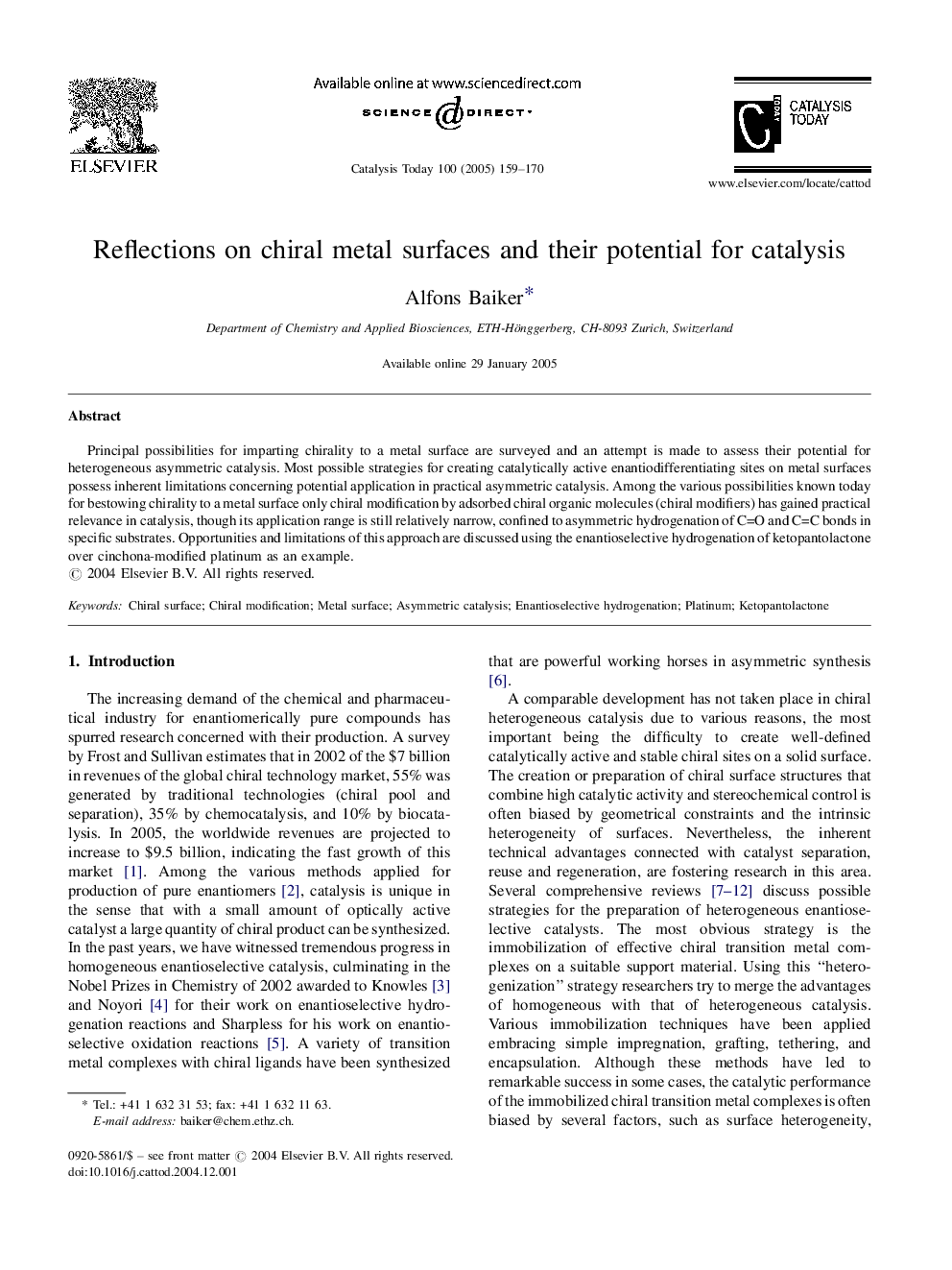| Article ID | Journal | Published Year | Pages | File Type |
|---|---|---|---|---|
| 9610549 | Catalysis Today | 2005 | 12 Pages |
Abstract
Principal possibilities for imparting chirality to a metal surface are surveyed and an attempt is made to assess their potential for heterogeneous asymmetric catalysis. Most possible strategies for creating catalytically active enantiodifferentiating sites on metal surfaces possess inherent limitations concerning potential application in practical asymmetric catalysis. Among the various possibilities known today for bestowing chirality to a metal surface only chiral modification by adsorbed chiral organic molecules (chiral modifiers) has gained practical relevance in catalysis, though its application range is still relatively narrow, confined to asymmetric hydrogenation of CO and CC bonds in specific substrates. Opportunities and limitations of this approach are discussed using the enantioselective hydrogenation of ketopantolactone over cinchona-modified platinum as an example.
Keywords
Related Topics
Physical Sciences and Engineering
Chemical Engineering
Catalysis
Authors
Alfons Baiker,
